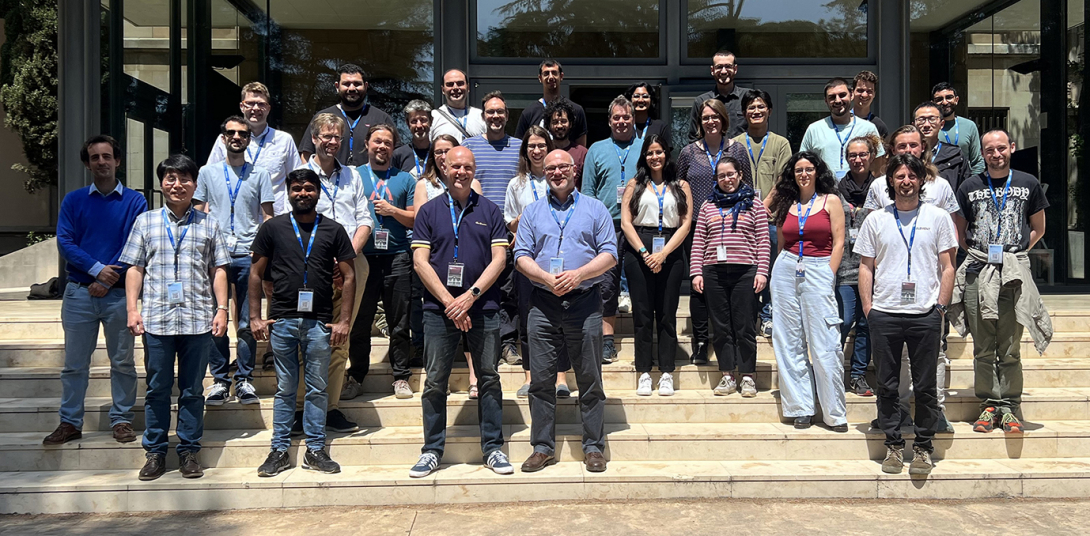OpenIFS aims to provide and support versions of ECMWF’s operational Integrated Forecasting System (IFS) for research, education and training. An important aspect of the OpenIFS activity is active engagement with the model’s user community. To support this, OpenIFS staff at ECMWF organise user meetings, which take place every couple of years and which are typically hosted at an institution in an ECMWF Member State. The 6th OpenIFS User Meeting took place from 22 to 26 May 2023 and was hosted at the Barcelona Supercomputing Center (BSC) in Spain. It focused on atmospheric composition and its role in numerical weather prediction (NWP).

Role of user meetings
The purpose of OpenIFS user meetings is to facilitate networking between model users and to enable sharing of their experiences in using OpenIFS. During the meeting, participants demonstrate their research activities with OpenIFS through oral and poster presentations. The meetings are also an opportunity for ECMWF to showcase the latest developments with OpenIFS. This is done through guided exercises in the form of computer practicals, which accompany the scientific theme of the speaker programme. As such, OpenIFS meetings are not training courses. Instead they are science-focused workshops for the user community, which include practical elements that often give early access to pre-releases of forthcoming versions of OpenIFS software. OpenIFS staff also benefit from these events by receiving first-hand feedback from model users about recent OpenIFS developments.
The May 2023 meeting
The BSC Earth Sciences Department is home to a large and wide-ranging group of researchers working actively with OpenIFS. There were 42 meeting participants, who came from many ECMWF Member States, and also from further afield, such as from China and South Korea. The meeting began with Stephen English, Deputy Director of Research at ECMWF, and Francisco Doblas Reyes, Director of Earth Sciences at BSC, welcoming all participants to the meeting, before an introductory day about OpenIFS for new model users. During the remainder of the week, the meeting focused on atmospheric composition and its role in NWP, with a combination of invited and contributed presentations. On Tuesday, the focus was on interactions between composition and meteorology in general, and gas-phase chemistry in particular. On Wednesday, the speakers explored the role of aerosol processes and recent improvements in their representation within NWP models. On Tuesday and Wednesday afternoon, the participants worked through atmospheric-composition-themed computer practicals on the European Weather Cloud. These practicals introduced the new OpenIFS/AC model configuration, which was developed at the Royal Netherlands Meteorological Institute (KNMI). They focused on the new capability of simulating atmospheric composition, as well as demonstrating the visualisation of model outputs with the Metview software package. On Thursday, the programme widened the scope to consider impacts of composition on longer, climate-relevant timescales, which included presentations from the EC‑Earth community. The meeting concluded on Friday with a focus on topics about future developments. These included a preview of the next release, OpenIFS 48r1, and on the role of machine learning applications in NWP and their potential role in simulating atmospheric composition.
Engaging discussions
This successful meeting was attended both by long-standing OpenIFS users, who in some cases could provide a user perspective reaching back to when OpenIFS started, and by many new users, who are now ready to adopt the model in their forthcoming work. We received a range of excellent and stimulating oral presentations, with invited speakers from ECMWF, BSC, KNMI, the Finnish Meteorological Institute (FMI), the Swedish Meteorological and Hydrological Institute (SMHI), the French company HYGEOS, and the UK Met Office. The talks from the research community demonstrated impressively the breadth of research applications for which OpenIFS is used, both in meteorology and NWP as well as increasingly in the interactions between atmospheric composition and NWP, and also in climate studies. The meeting produced very engaging discussions, both on research topics and on current and future model developments.
The forthcoming OpenIFS model upgrade to the operational IFS Cycle 48r1 received strong positive feedback from participants, as did the availability of the OpenIFS Data Hub to generate data for experiments. We would like to express our gratitude to all meeting participants in Barcelona, including remote speakers, computational support staff, and the entire organising team for contributing to a memorable and productive OpenIFS user meeting.

